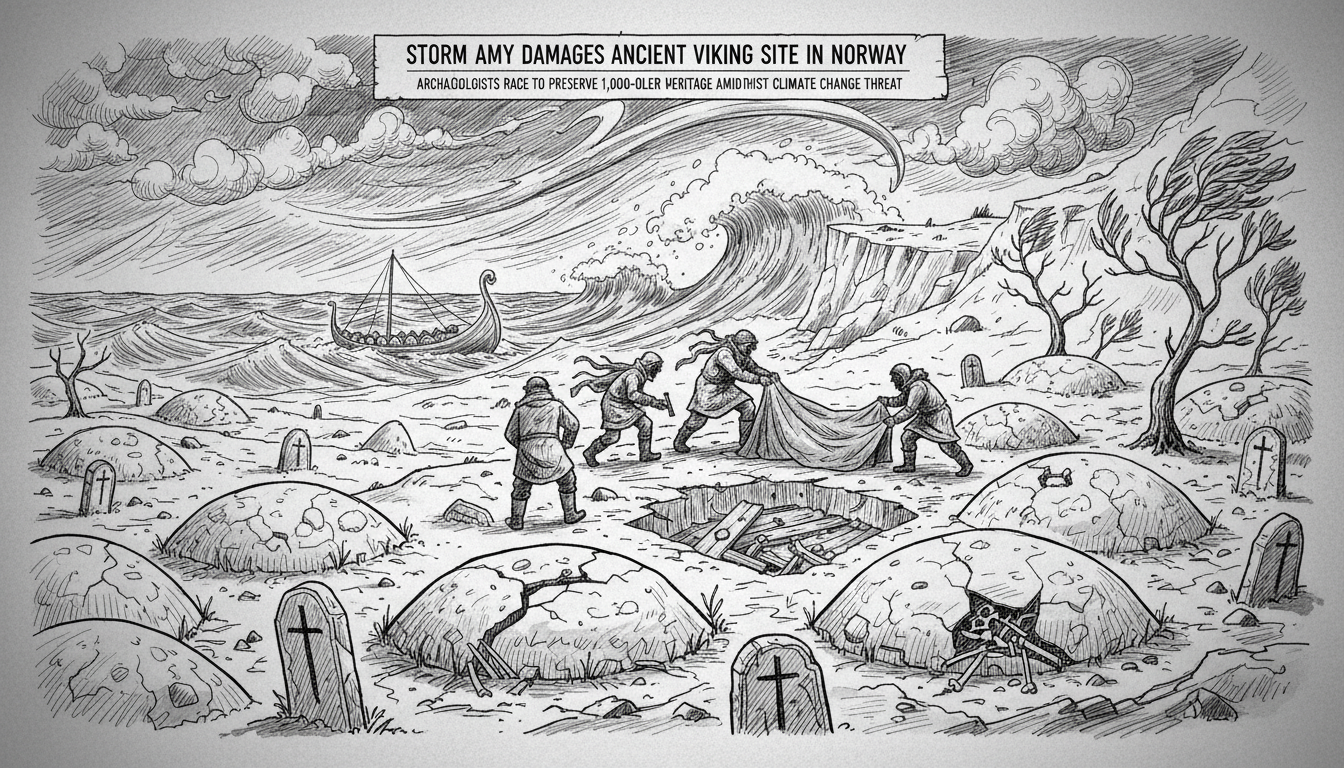Archaeologists in Norway now race against winter to protect a massive Viking burial ground damaged by Storm Amy. The Vang field in Oppdal contains approximately 900 graves dating back over 1,000 years. Strong winds uprooted trees whose roots then exposed ancient burial chambers to the elements.
Eirin Ellingsen, an archaeologist with Trøndelag County, leads the emergency preservation efforts. She explains they must document and secure artifacts before winter sets in. The team faces a five-week timeline to complete this critical work.
Storm Amy struck Norway in early October, causing widespread damage across the region. The Vang burial field suffered particularly severe impacts due to its exposed location. This site represents Norway's largest known Viking burial ground and ranks among Northern Europe's most important archaeological treasures.
Exposed artifacts face immediate threats from weather and temperature changes. Metal objects deteriorate rapidly when exposed to air after centuries underground. Frost can shatter delicate artifacts, while rain and snow may wash away smaller items completely.
What makes Vang particularly significant is its collective burial pattern. Unlike typical Viking farms that maintained individual burial grounds, this community appears to have established a shared resting place. This creates an unusually concentrated archaeological record spanning the Viking Age from 700-1000 AD.
Jannie Schnelder Johansen, an archaeologist and senior advisor with Norway's Directorate for Cultural Heritage, expresses deep concern about the damage. She notes climate change increases threats to cultural heritage sites nationwide. More frequent extreme weather events create new preservation challenges.
The national cultural heritage authority has allocated 1.4 million Norwegian kroner to support emergency preservation work at Vang. This funding enables archaeologists to document exposed artifacts and reinforce damaged burial structures.
Climate change presents multiple threats to Norway's cultural heritage. Increased rainfall, higher ground moisture levels, and shorter frost periods all accelerate deterioration of ancient sites. Johansen emphasizes the need for better preparedness measures at vulnerable locations.
Archaeologists now face difficult balancing acts in preservation work. Removing trees might prevent future root damage but could allow vegetation overgrowth. Each intervention requires careful consideration of long-term impacts.
The Vang damage highlights broader concerns about cultural heritage protection in changing climate conditions. Norway's extensive archaeological record faces growing threats from extreme weather patterns. This incident may prompt revised approaches to heritage site management nationwide.
Recovered artifacts undergo cataloging before transfer to the NTNU University Museum for permanent preservation. This process ensures valuable historical information survives despite the storm damage. The emergency work continues as winter approaches.
This situation demonstrates how climate change directly impacts cultural preservation. Ancient sites that survived centuries now face new threats from increasingly severe weather patterns. The Vang burial field damage serves as a warning for heritage sites across Scandinavia.

